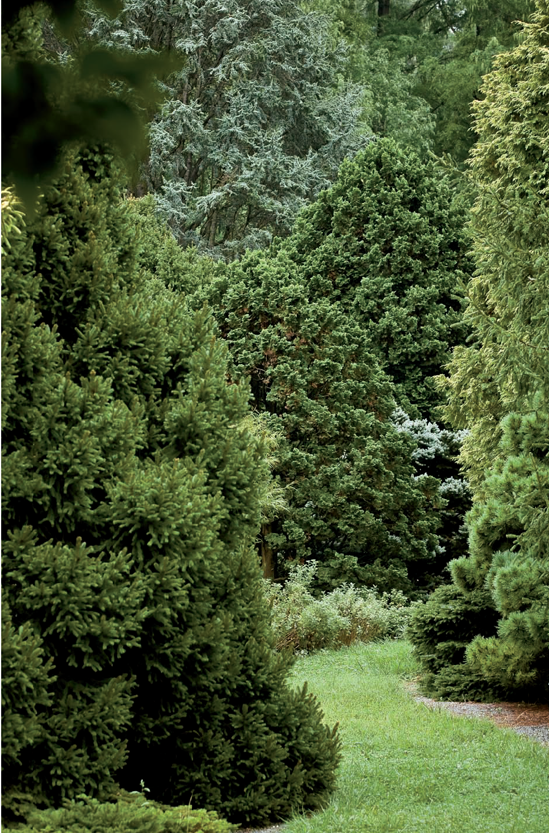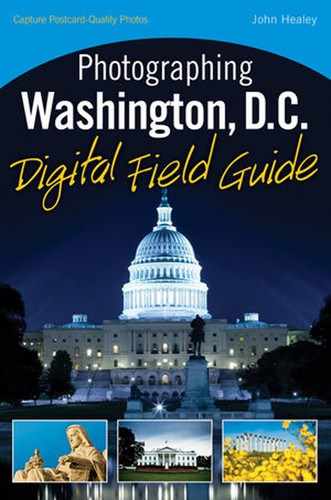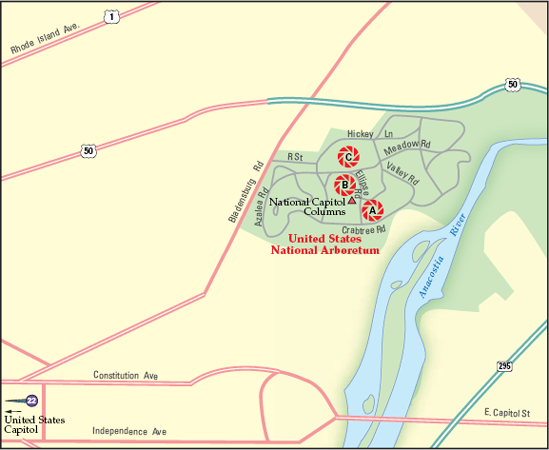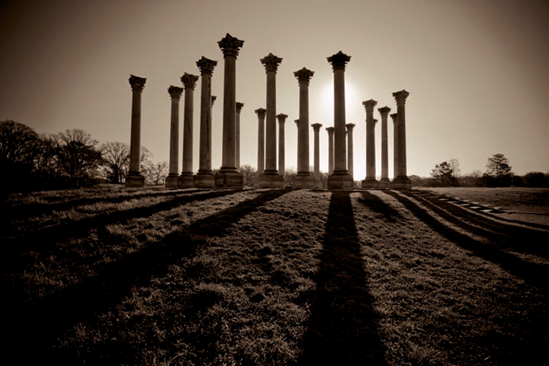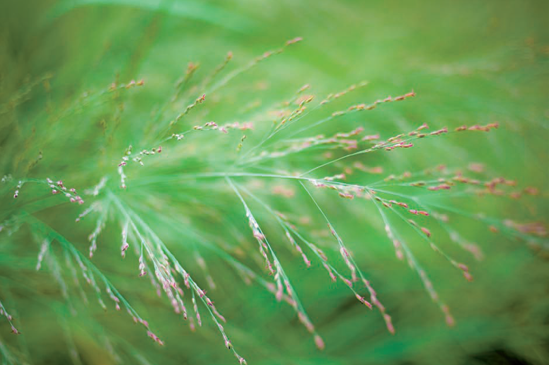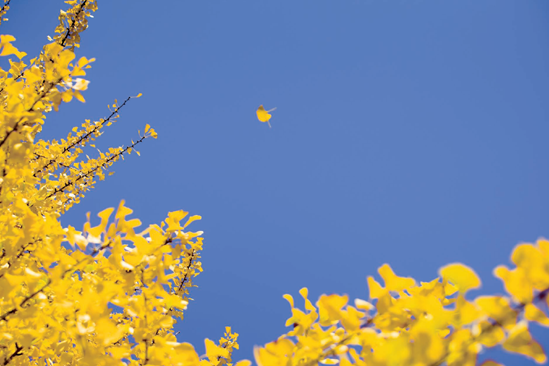
Fall begins at the United States National Arboretum. Taken at ISO 100, f/4, 1/400 second with a 90mm lens.
The United States National Arboretum is a living museum of some 400 acres filled with woodlands, meadows, unique plant collections, and research areas. The museum offers the largest designed herb garden in the U.S., and it houses the National Bonsai and Penjing Museum, a showcase of the Asian art of miniature trees.
The arboretum has one of the more unique sights in Washington, D.C.: the National Capitol Columns. These Corinthian columns were part of the Capitol's east portico prior to the installation of the massive dome. The dome was quite larger than the original designs had specified, and these columns appeared too small and out of balance with the structure. In 1958, the Capitol's east side received a makeover, and the columns were removed and marble reproductions were put in their place. Today, 22 of the 24 columns sit atop a meadow within the National Arboretum. It's a beautiful, tranquil place to both visit and photograph.
Images of the National Capitol Columns along with many others of flowers, exotic plants, trees, and gardens are possible at the arboretum. Nine miles of roads connect the various areas, so a car or a bike is quite useful when visiting. Private and public tram tours are also available.
During the summer when the wildflowers are blooming at the southeast corner of this intersection, it's a beautifully surreal scene at the Capitol Columns (see Figure 25.1).
When next to the Capitol Columns there are many ways they can be photographed, whether you use the reflecting pool as part of the composition or not (see Figure 25.2).
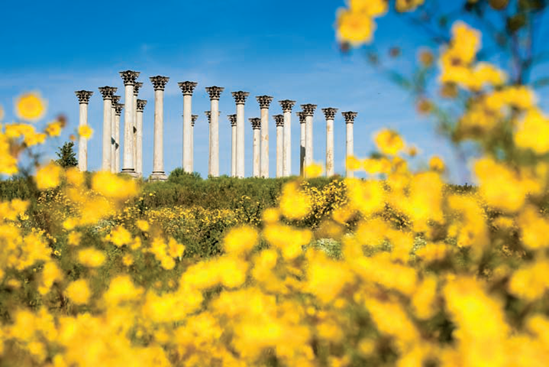
Figure 25.2. The National Capitol Columns framed by wildflowers at the U.S. National Arboretum (see A on the map). Taken at ISO 100, f/2.8, 1/2000 second with a 65mm lens.
Around the arboretum, you can find diverse collections of flora and fauna (see Figure 25.3). Whether your desires are roses, lilac, or simple switchgrass, you can find lovely examples of many types of plants close by the administration building. Japanese koi swim in pools at the Aquatic Garden, surrounded by a vast variety of greenery.
The other gardens next to the building feature plants developed through research and breeding by Arboretum scientists and are a kaleidoscope of color and form. Also nearby are many other gardens, such as the Historic Rose Garden and Herb Garden.
The National Arboretum has a variety of areas to shoot, and it's a very peaceful setting. Be sure to be mindful of other visitors and not block their way with equipment and, most importantly, do not tamper with the plants.
Great shots can be taken here with everything from a point-and-shoot camera to a high-end dSLR.
The photograph of the National Capitol Columns (refer to Figure 25.2) can be shot with a 100–150mm lens, depending on how you want to compose it. Lenses with larger apertures allow you to blur out the foreground more, but this is a style preference. The picture could be equally interesting shot at higher aperture values of f/11, for example. If you are shooting next to the columns, you'll need a wide lens in the range of 16–24mm. Or you can walk away from them and use a more standard lens of 35mm or 50mm, but a wide lens adds a vast feeling that you don't really get with standard-length lenses.
When working from the Capitol Column reflecting pool, you can use a lens between 20mm and 35mm if you are right at the base of the pool.
For close-up images near the administration building (see Figure 25.4), regular lenses of between 35mm and 50mm are great. Some lenses allow you to focus closer than others, however, so you may want to experiment beforehand with your lens' minimum focusing distance. You can also use macro (sometimes referred to as micro) lenses here. (See Chapter 21 for more information about macro photography.)
Images of the Capitol Columns may be significantly enhanced with both a polarizing filter and a graduated neutral density filter. The polarizer darkens a blue sky and increases contrast with the clouds, while the neutral density can help to equalize the exposure between the ground and the sky.
A tripod is a great help when photographing flowers and other plants, because you won't have to hold your camera steady constantly when composing your shot. However, bear in mind that photographing flowers with long shutter speeds requires a completely windless day, as any movement will blur them in the photo.
Using a camera's Auto white balance when photographing flowers can throw off the natural colors significantly. Cameras often base their white balance off of what colors are predominant in the photo, and if your subject is predominantly yellow or green, the camera may correct for this. Try out other settings to see what works best for reproducing the colors faithfully. Often the Daylight setting is a good starting point.
For the images from the wildflowers of the Capitol Columns, using Aperture Priority mode allows you to set a lower aperture value to blur out the foreground — or you can set a higher aperture value to keep everything in focus. But be sure to keep an eye on what corresponding shutter speed your camera is setting when handholding your camera.
You should keep your shutter speed set fast enough to avoid camera-shake induced blurring using the rule of one over your focal length. For example, using a focal length of 150mm means you want to select a shutter speed that is at or above 1/150 second to avoid a blurry image from shaking your camera. Because this falls between the common shutter speeds of 1/125 second and 1/250 second, you want to select the faster of the two. This rule gets more important as focal length gets longer (above 70mm in general), as it's harder to keep a longer focal length lens steady.
If you are photographing the columns from a low vantage point, try intentionally underexposing the scene so that the sky goes very blue and the columns are silhouetted. You can do this either with your camera's exposure compensation function (by setting it to a lower or negative setting) or by manually setting it to a value below what your camera's meter is telling you is a normal exposure.
The time of day may determine where you should photograph at the arboretum. The good news is that there is an abundance of areas you can choose from for any time of day and type of light.
Of all the places in Washington, D.C., the arboretum varies most with the seasons. Doing some upfront research can help you plan where to go. Spring and summer are obviously the best times for abundant and varied color; fall is a beautiful time to see the changing leaves; and winter has its beauty with both snow and conifers. You can also find year-round exhibits, such as the Asian Valley, Friendship Garden, National Bonsai and Penjing Museum, and the Holly and Magnolia collections.
Tip
Check the arboretum's Web site to find out what exhibits will be at their peak during your visit: www.usna.usda.gov.
Surprisingly a bright, sunny day can be great for some photos but not for others. And what some may see as a dreary, overcast day can actually be wonderful light for photographing flowers. The light is very soft with diffused shadows, which create graceful lines and colors. Here, you can choose the subjects to photograph based on what the conditions are: A bright, sunny day could mean great backlit shots of sunflowers, while an overcast day may mean catching the subtle color gradations of Shortwood Phlox (see Figure 25.5).
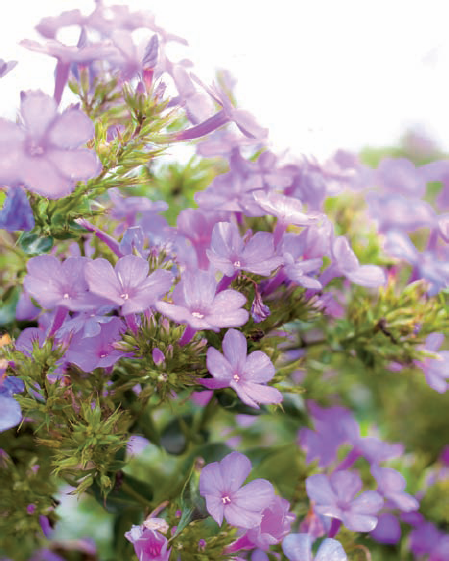
Figure 25.6. Shortwood Phlox photographed on an overcast day. Taken at ISO 100, f/4, 1/100 second with a 50mm lens.
When photographing from the reflecting pool of the Capitol Columns, a windless day gives you a better reflection here. Also, the clouds in the sky influence how the light bounces off the water here: A blue sky gives you more clean reflections, while a cloudy day makes the image in the water vary more.
The arboretum is open daily from 8 a.m. to 5 p.m. every day of the year except December 25. Therefore, low-light options are generally limited to the winter after daylight savings time ends on the first Sunday in November.
The National Arboretum is a grand test of one's creative thinking, and in every garden a wonderful photograph could be waiting to be shot. Don't discount the less elegant subjects, either. Switchgrass may not sound elegant, but when photographed creatively, it can be supremely so. Creativity always involves exploration; at the arboretum, you can wander around its grounds to find something unexpected.
Be sure to experiment with not only the safer ways of photographing, such as front-lit subjects, but also with more difficult methods, such as using light behind the subject, which creates a terrific glow (you'll often have to increase your exposure when doing so by using exposure compensation). And trying color and black-and-white options can really open up the possibilities.
Tip
The National Arboretum is federally funded but also relies on private funds for some of its most popular attractions, such as the placement of the National Capitol Columns on its grounds. If you enjoyed your visit, consider a small donation on your way out or online.
